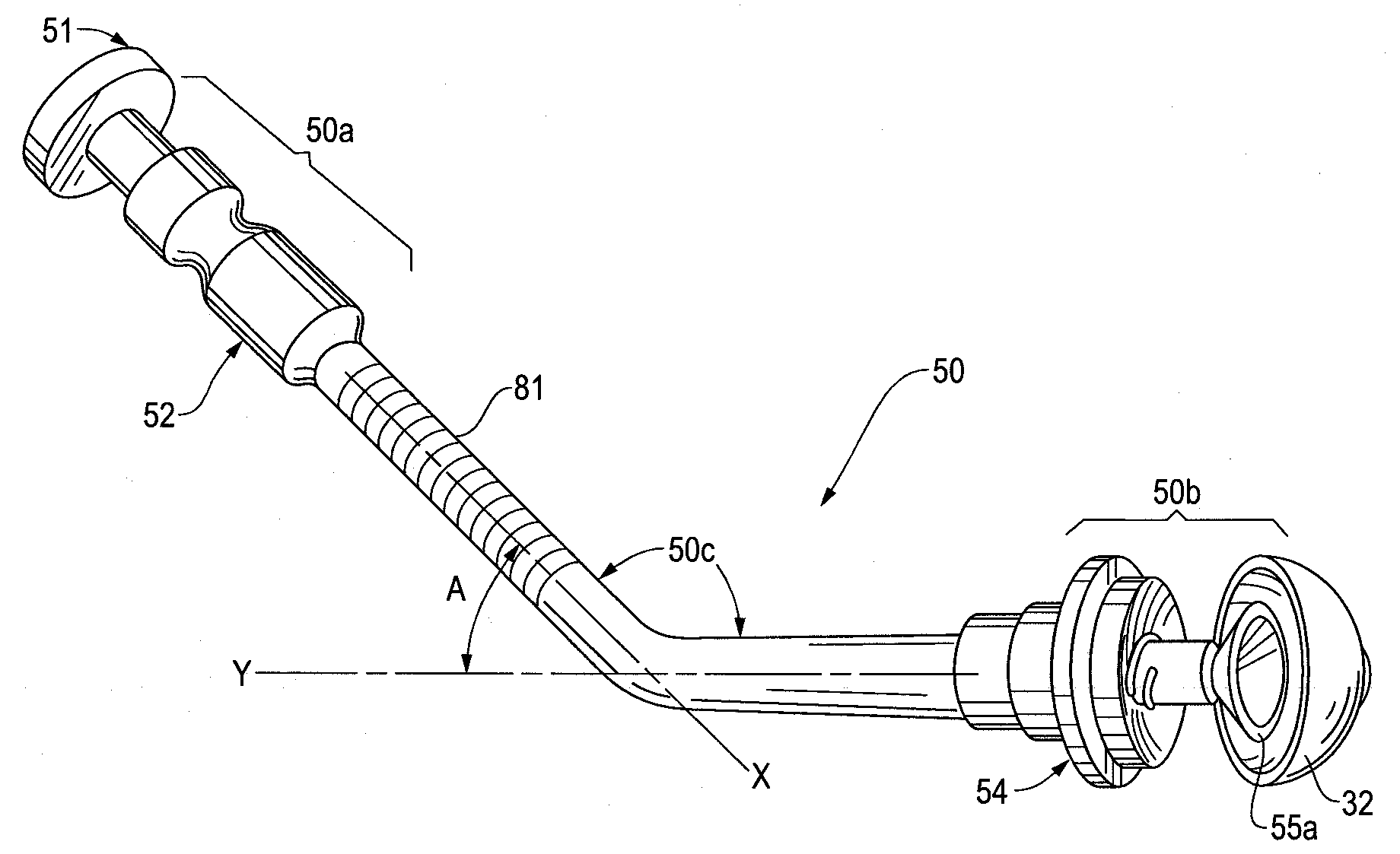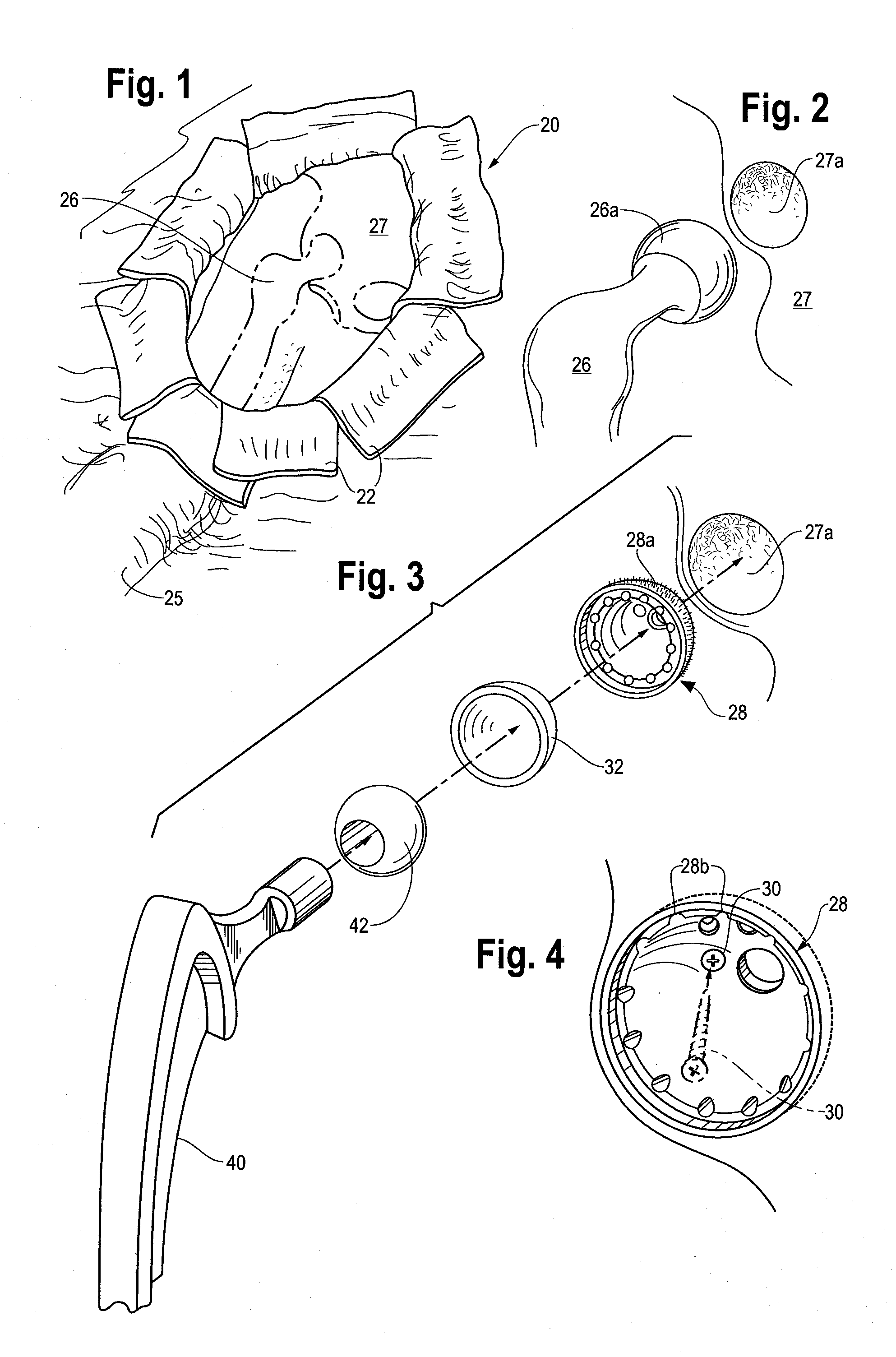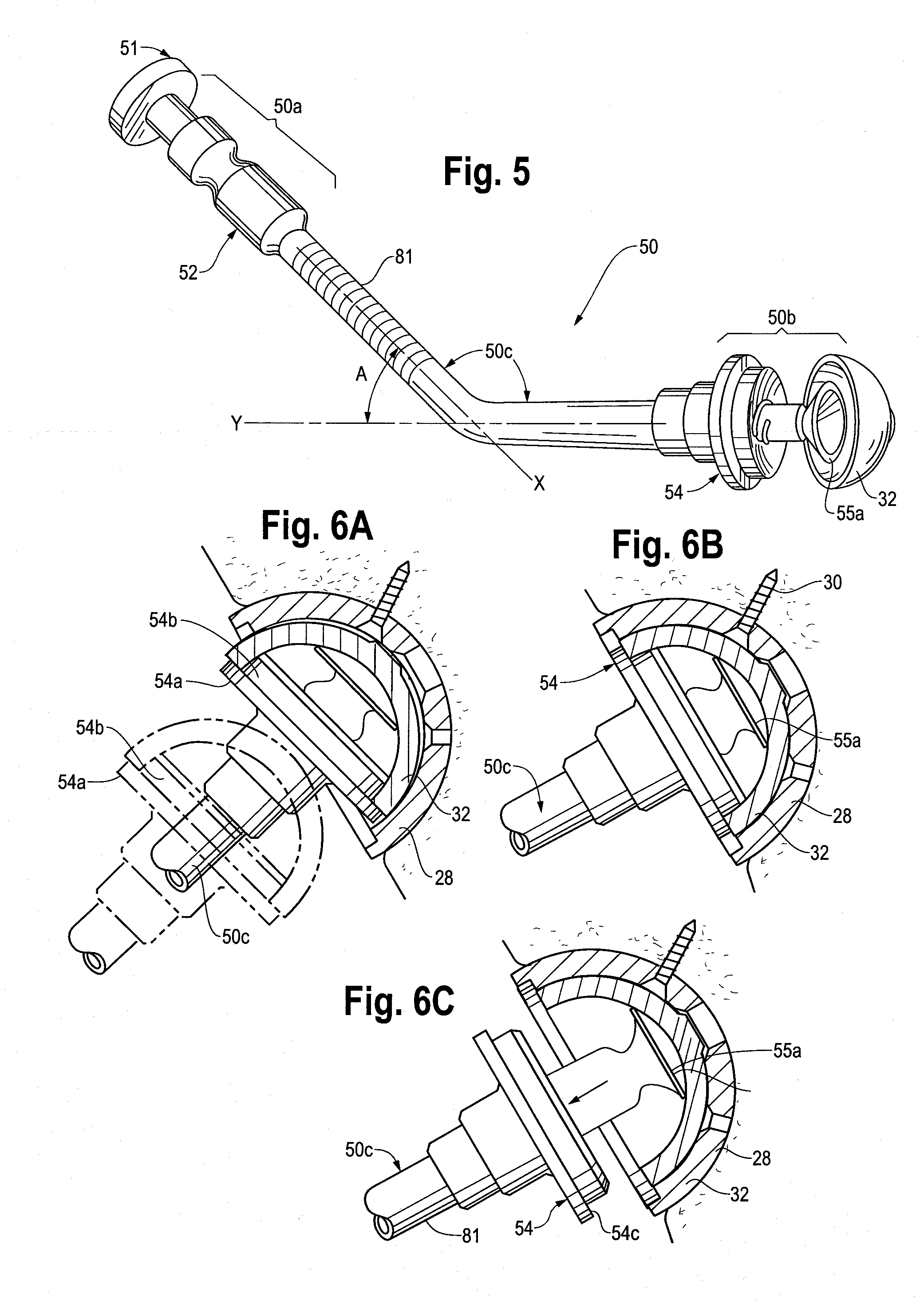Surgical insertion device for use in orthopedic surgery
a surgical and orthopedic technology, applied in the field of surgical insertion devices for use in orthopedic surgery, can solve the problems of difficult entry of surgeons into the cup liner, time-consuming and difficult tasks, and the problem of difficult to remove the cup liner
- Summary
- Abstract
- Description
- Claims
- Application Information
AI Technical Summary
Benefits of technology
Problems solved by technology
Method used
Image
Examples
Embodiment Construction
[0025]Set forth below is a description of what are currently believed to be the preferred embodiments and / or best examples of the invention claimed. Future and present alternatives and modifications to these preferred embodiments are contemplated. Any alternatives or modifications which make insubstantial changes in function, in purpose, in structure or in result are intended to be covered by the claims of this patent.
[0026]Below, “SIS” refers to Surgical Instrument Service Company of Carol Stream, Ill. “McMaster” refers to McMaster-Carr of Chicago, Ill. “Atlas Fibre” refers to Atlas Fibre Company of Skokie, Ill.
[0027]Referring first to FIGS. 1-2, a hip replacement surgical site, designated generally as 20 is shown, with retracted skin flaps 22, the femoral portion 25 of a leg, and the hip / pelvic bone portion 27. The upper portion of the femur bone 26 terminates in a ball portion 26a which attaches to the socket 27a of hip bone portion 27, as shown in FIG. 2.
[0028]To provide an over...
PUM
 Login to View More
Login to View More Abstract
Description
Claims
Application Information
 Login to View More
Login to View More - R&D
- Intellectual Property
- Life Sciences
- Materials
- Tech Scout
- Unparalleled Data Quality
- Higher Quality Content
- 60% Fewer Hallucinations
Browse by: Latest US Patents, China's latest patents, Technical Efficacy Thesaurus, Application Domain, Technology Topic, Popular Technical Reports.
© 2025 PatSnap. All rights reserved.Legal|Privacy policy|Modern Slavery Act Transparency Statement|Sitemap|About US| Contact US: help@patsnap.com



